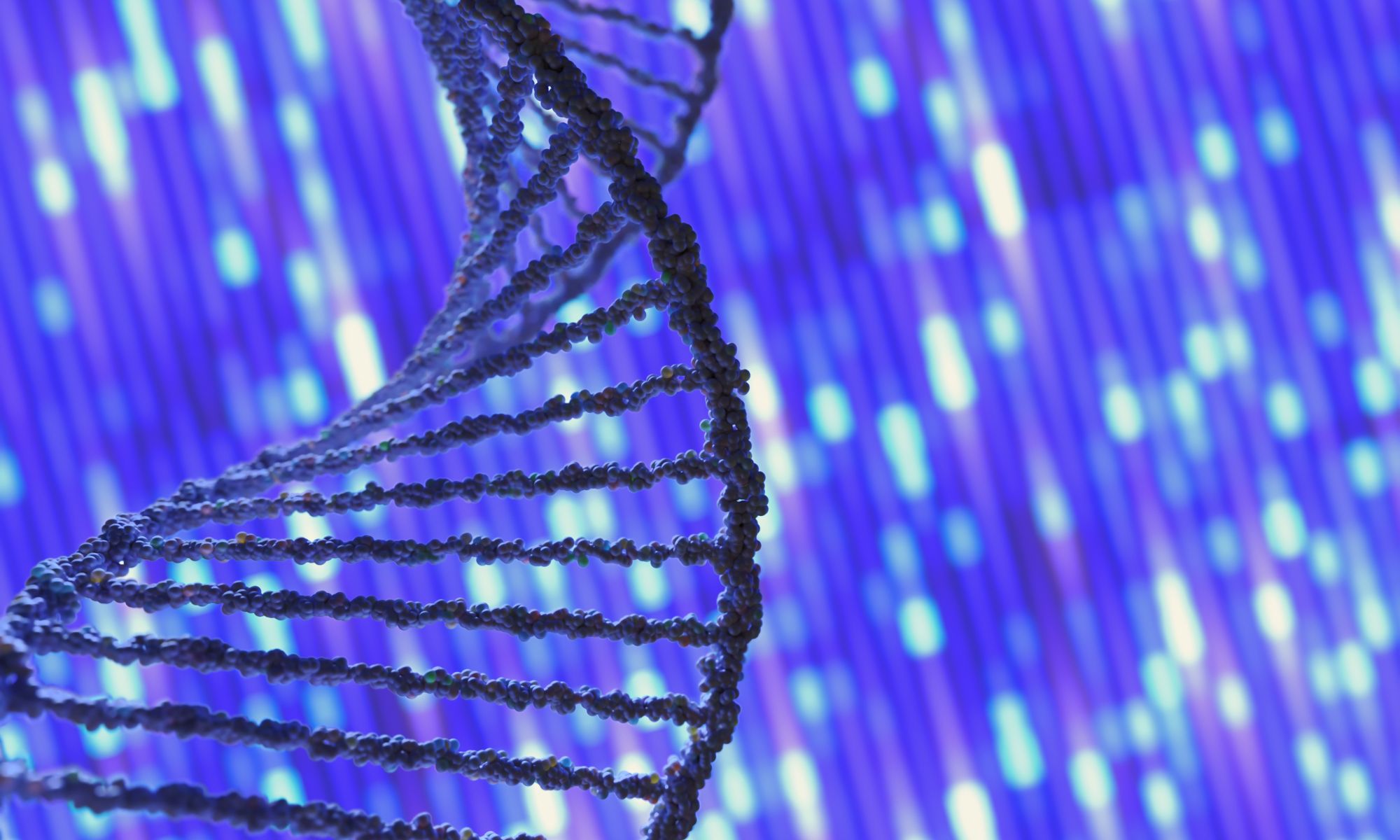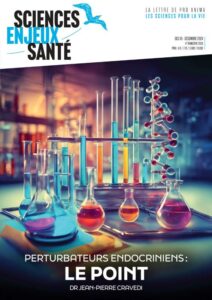
ECHA investigates how to replace toxicity testing with fish, EU consultation on AI Act, Deep RNA sequencing to explore human neurology, and more
News on non-animal methods
NOV 18 - 22, 2024NEWS, REPORTS & POSITION STATEMENTS
1. QMUL leads project to revolutionise drug discovery with next-generation organ-chip technology
Queen Mary University of London (QMUL) in collaboration with a consortium of leading pharmaceutical companies, organ-chip technology providers, and regulatory bodies, has secured a £1.7 million research grant from the Engineering and Physical Sciences Research Council (EPSRC) to develop organ-chips that incorporate spatial tissue patterning. This cutting-edge technology will enable researchers to precisely replicate the complex architecture and cellular organisation of human organs within microfluidic chips.
Professor Martin Knight, Co-Director of the Centre for Predictive in vitro Models and Principal Investigator on this project, highlights the importance of the research : “By harnessing the power of novel bio-micromanufacturing, we can create organ-chip models that are far more representative of the human body. This will revolutionise drug discovery, leading to safer, more effective therapies reaching patients faster.”
2. ECHA to investigate new test method potentially replacing toxicity testing with fish
The European Agency has contracted the Fraunhofer Institute to explore one potential alternative method to current aquatic toxicity testing of chemicals involving the use of fish. The project examines whether the Fish Embryo Toxicity (FET) test, one of the most popular alternatives to acute toxicity testing, could be considered as a valid alternative to chronic fish toxicity testing when enhanced with transcriptomics measurements.
To learn more about the framework contract, listen to the interview with Sylvia Escher from the Fraunhofer Institute and Tomasz Sobanski from ECHA’s Alternative Methods Team. They discuss priorities and upcoming research to advance non-animal testing methods that ensure chemical safety and meet regulatory requirements through work to enhance science, knowledge and collaboration.
Read more and listen to the interview
3. BC Platforms helps to unify EU healthcare data governance
BC Platforms has launched its EHDS-Ready Trusted Research Environment (TRE), a platform designed to help EU healthcare institutions comply with European Health Data Space (EHDS) regulations beginning in 2025. EHDS aims to unify EU healthcare data governance, supporting both primary and secondary patient data use, and is projected to save €5.5 billion over a decade by improving data exchange efficiency across Europe.
The platform supports real-world data (RWD) analysis, which is critical for research and policy in the healthcare sector. As anticipated EHDS regulations roll out, BC Platforms’ TRE enables federated data analysis, facilitating cross-border research while maintaining strict security standards.
INTERVIEWS, NOMINATIONS & AWARDS
4. NETRI wins prestigious Innovation Award from Consumer Electronic Show (CES) 2025
The CES Innovation Awards® program is an annual competition honoring outstanding design and engineering in consumer technology products. The program recognizes honorees in a multitude of consumer technology product categories and distinguishes the highest rated in each. NETRI, an industrial start-up based in Lyon (France), has been awarded this highly coveted Award in the Food AgTech category for its pioneering platform, NeuroFluidics™ Care. This platform is transforming biochemical safety assessments, enabling early toxicity analysis of compounds used by the food industry with unprecedented precision and accessibility.
5. Emulate Liver-Chip S1 accepted into FDA’s ISTAND pilot program — What’s next ?
Recently, Emulate announced that the Liver-Chip S1 was accepted into the FDA’s ISTAND pilot program. To learn more, Dr. Lorna Ewart, Chief Scientific Officer at Emulate, answered questions about what this acceptance means for the company, the drug development industry, and the future of drug safety assessment.
“For Emulate, being accepted into the ISTAND program is an important milestone that represents the Liver-Chip S1’s potential applicability in regulatory contexts. For the pharmaceutical industry, it indicates the increasing interest in using more human-relevant models earlier in the drug development process. Ultimately, full qualification could mean more accurate prediction of drug-induced liver injury (DILI) for drugs whose structural analogs have previously shown a DILI response in the clinic. This could improve patient safety by reducing the risk of adverse effects that traditional models may miss.”, says Dr Lorna Ewart.
TOOLS, PLATFORMS, CALLS
6. European Commission launches consultation on AI Act prohibitions and AI system definition
The Commission’s Artificial Intelligence (AI) Office is launching a targeted stakeholders consultation process on the future guidelines on the AI system definition and the implementation of AI practices that pose unacceptable risks under the AI Act.The guidelines will help national competent authorities as well as providers and deployers in complying with the AI Act’s rules on such AI practices ahead of the application of the relevant provisions on 2 February 2025.
This consultation, which will remain open for 4 weeks until 11 December 2024, seeks additional practical examples from stakeholders to feed into the guidelines and provide further clarity on practical aspects and use cases.
Find more information on the consultation
7. ESTIV 2026 : Call for sessions and pre-register as sponsor
The 23rd international congress of the European Society of Toxicology In Vitro (ESTIV 2026) will take place from June 28 – July 2, 2026, in Maastricht, Netherlands. The overarching theme of the congress is “Ensuring Safety, Advancing Science : Bridging to the Future with NAMs.”
The Organising and the Scientific committee invite you to submit your session proposals that align with this theme. Presenting authors will have the opportunity to prepare original research manuscripts or review papers for consideration in the ESTIV 2026 proceedings, to be published in the journal Toxicology In Vitro. Sponsors can also pre-register for the ESTIV 2026 Congress.
INDUSTRY, BIOTECH & PARTNERSHIPS
8. InSphero awarded major EU Grant to address diversity in 3D in vitro testing
InSphero, a global leader in scalable and reliable 3D in vitro cell culture solutions for drug discovery, will take a major role in the recently awarded Chips JU European UNLOOC Project to advance its technology platform and address diversity in drug efficacy and safety testing. Launched in May 2024, the Project UNLOOC — Unlocking data content of Organ-on-Chips — with an overall budget of €68 million brings together 51 organizations in academia, research, and technology companies from 10 European countries.
Dr. Olivier Frey, member of the UNLOOC executive board and project leader at InSphero, commented, “UNLOOC provides us with the right framework and excellent partners to accelerate our cryopreservation, automation, and read out platforms, thereby widening our lead in scalable and information-rich solutions.”
SCIENTIFIC DISCOVERIES & PROTOCOLS
9. A biomimetic liver cancer-on-a-chip reveals a critical role of LCN‑2 in promoting HCC progression
Hepatocellular carcinoma (HCC) is the most common form of primary liver cancer and is notoriously resistant to drug treatment, largely due to the complexity of the tumor microenvironment (TME), constituted of hepatic stellate cells (HSCs) which play a critical role in tumor progression and drug resistance.
Researchers developed a tri-cell culture microfluidic chip to evaluate the impact of HSCs on HCC progression. On-chip analysis revealed activated HSCs contributed to endothelial invasion and HCC drug resistance. Cytokine array and RNA sequencing analysis were combined to indicate the iron-binding protein LIPOCALIN‑2 (LCN‑2) as a key factor in remodeling tumor microenvironments in the HCC-on-a-chip. Taken together, the microfluidic platform exhibited obvious advantages in mimicking functional characteristics of tumor microenvironments and developing targeted therapies.
10. Leveraging deep RNA sequencing to explore the neural basis of human somatosensation
The versatility of somatosensation — the capacity of the body to feel sensory information — arises from specific neurons, heterogeneous dorsal root ganglion (DRG). However, soma transcriptomes of individual human (h)DRG neurons — critical information to decipher their functions — are lacking due to technical difficulties.
In a new study published in Nature Neuroscience, scientists isolated somata from individual hDRG neurons and conducted deep RNA sequencing (RNA-seq) to detect, on average, over 9,000 unique genes per neuron, and identified 16 neuronal types. Cross-species analyses revealed divergence among potential pain-sensing neurons and the likely existence of human-specific neuronal types. In summary, by employing single-soma deep RNA-seq and spatial transcriptomics, they generated an hDRG neuron atlas, which provides insights into human somatosensory physiology and serves as a foundation for translational work.
Read the article in Nature Neuroscience
11. The culture and application of circulating tumor cell-derived organoids
Circulating tumor cells (CTCs), which have the heterogeneity and histological properties of the primary tumor and metastases, are shed from the primary tumor and/or metastatic lesions into the vasculature and initiate metastases at remote sites. In the clinic, CTCs are used extensively in liquid biopsies for early screening, diagnosis, treatment, and prognosis. Current research focuses on using CTC-derived models to study tumor heterogeneity and metastasis, with 3D organoids emerging as a promising tool in cancer research and precision oncology.
However, isolating and enriching CTCs from blood remains challenging due to their scarcity, exacerbated by the lack of an optimized culture medium for CTC-derived organoids (CTCDOs). This recent review in Trends in Cell Biology summarizes the origin, isolation, enrichment, culture, validation, and clinical application of CTCs and CTCDOs.
Read the review in Trends in Cell Biology


